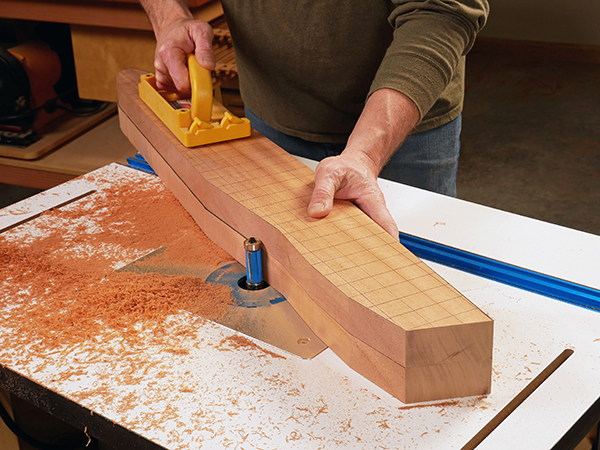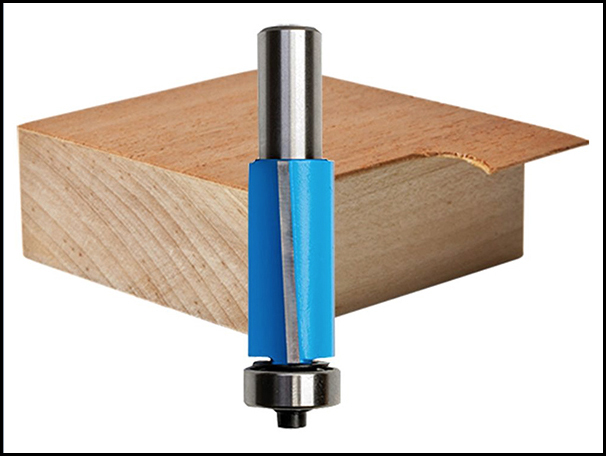
I am about to buy a flush-trim router bit. I was checking various websites and noticed that flush-trim bits come in several diameters. As all of them serve basically the same purpose — trimming one wood surface to match another wood or template surface — why do they come in different diameters when they do the same thing? Is there any advantage? – Kanade Ulhas
Chris Marshall: A 1/2-in. flush trim bit has a 1/4-in. radius. A 3/8-in. flush-trim bit has a 3/16-in. radius, and a 1/4-in. flush trim bit has a 1/8-in. radius. Forgive me for sounding pedantic here, but I’ll bet you’re beginning to see one reason why flush-trim bits come in different diameters: their varying radii can be an advantage. Sometimes you need a tight radius to trim into corners, slots or small inside cutouts where a larger bit just wouldn’t fit or would leave too much material behind in the corners. I’ve also encountered situations where the bit’s radius creates the exact inside corner curve I want. In other situations, strength is the bigger virtue: I’d rather template-rout a thick piece of white oak or maple with a 1/2-in.-shank flush-trim bit than a 1/4-in. shank bit, because it’s a stiffer piece of steel that can handle heavy-duty cuts like this. Some tasks call for a long, hefty bit, while other times a slender, more delicate cutter is the right choice.
All this said, my 1/2-in.-dia. flush-trimmer with a 1/2-in. shank is the one I use most often. If you intend to buy only one flush-trim bit, this is a really good one to have. Longer bits offer more versatility, because you’ll be able to use it on both thick and thin stock. And if you can find a bit with a shear angle to the cutting edges, such as Rockler’s flush-trim bit in the photo below, choose that over a bit with no shear angle: the angle helps to reduce burning, splintering and tearout.






